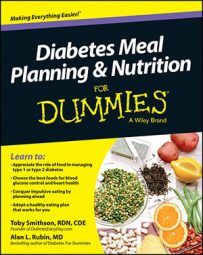Managing diabetes with diet includes getting an adequate intake of high quality protein in your diet to maintain important muscle mass, and to keep important metabolic functions humming along. The highest quality protein has amino acids which are readily available, and easily absorbed, during digestion.
Amino acid molecules are what characterize proteins. Amino acids primarily consist of carbon, hydrogen, and oxygen like most organic compounds, but always include nitrogen in what’s called an amino group. Many of the proteins in your body turn over rapidly, degrading into their amino acid constituents. An average adult may turn over 250 grams of protein every day, mostly from muscle.
Some of the amino acids are reincorporated into new protein, and some is burned as energy (protein stores 4 calories of energy per gram).The nitrogen becomes a waste product from protein burned for energy, and is excreted in urine as urea.
This constant turnover is why protein is such an important part of your diet — new amino acids are always necessary to build new protein. Your dietary protein recommendations are calculated to resupply amino acids for rebuilding protein that has been burned for energy, or otherwise lost.
Hundreds of specific amino acids have been identified, but only 20 are specifically coded into human DNA for inclusion in protein assembly. Other amino acids do play important roles in metabolism, however. Your body can actually produce some of the 20 protein coded amino acids from other amino acids, or from protein degradation products. But you cannot produce 9 of the 20, and these are, therefore, called essential amino acids. These amino acids must be acquired from food.
The table lists the nine essential (indispensable) amino acids, nine nonessential (or dispensable) amino acids, and two conditionally nonessential amino acids. These two amino acids can normally be assembled from available materials, but under some circumstances cannot. The categorization represents the requirements for adults.
| Essential Amino Acids | Nonessential Amino Acids |
|---|---|
| Isoleucine | Alanine |
| Leucine | Arginine |
| Lysine | Aspartic acid |
| Methionine | Asparagine |
| Phenylalanine | Glutamic acid |
| Threonine | Glutamine |
| Tryptophan | Glycine |
| Valine | Proline |
| Histidine | Serine |
| Cysteine* | |
| Tyrosine* |
* Conditionally nonessential
Some foods, called complete protein foods, contain all of the essential amino acids in sufficient amounts. Foods that don’t contain all nine essential amino acids are called incomplete, and the missing essential amino acids are called the limiting amino acid. Lysine, threonine, and tryptophan are the most common limiting amino acids.

